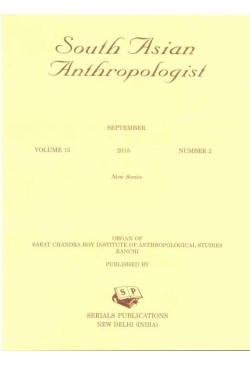
South Asian Anthropologist
Frequency :Bi-Annual
ISSN :0257-7348
Peer Reviewed Journal
Menstrual Characteristics and Practices of Menstrual Hygiene among the Adolescent Females of a Slum Area in Bidhannagar Municipal Corporation, North 24 Parganas, West Bengal
Age Changes in Muscle and Fat Distribution among the Oraon Tea Garden Labourers of Alipurduar District, Northern West Bengal
Nutritional Status among the Khasi Women of Saiden Village, Meghalaya
Effect of Land Acquisition on Social Structure: An Ethnographic Study of a Village in Paschim Medinipur District, West Bengal
Effects of Insurgency Related Violence and its Emerging Health Symptoms among Women of Manipur, North-East India
Prevalence of High Blood Pressure among the Auto Rickshaw Drivers and its Relation with Body Composition Indicators
On Agricultural Resources Sharing among the Small and Medium Scale Farmers in India
A Study on Anthropological Demography among the Koya Doras of West Godavari District, Andhra Pradesh
The Santals of Bangladesh and Their Linguistic Transformation: A Recent Collocation on its Juxtaposition